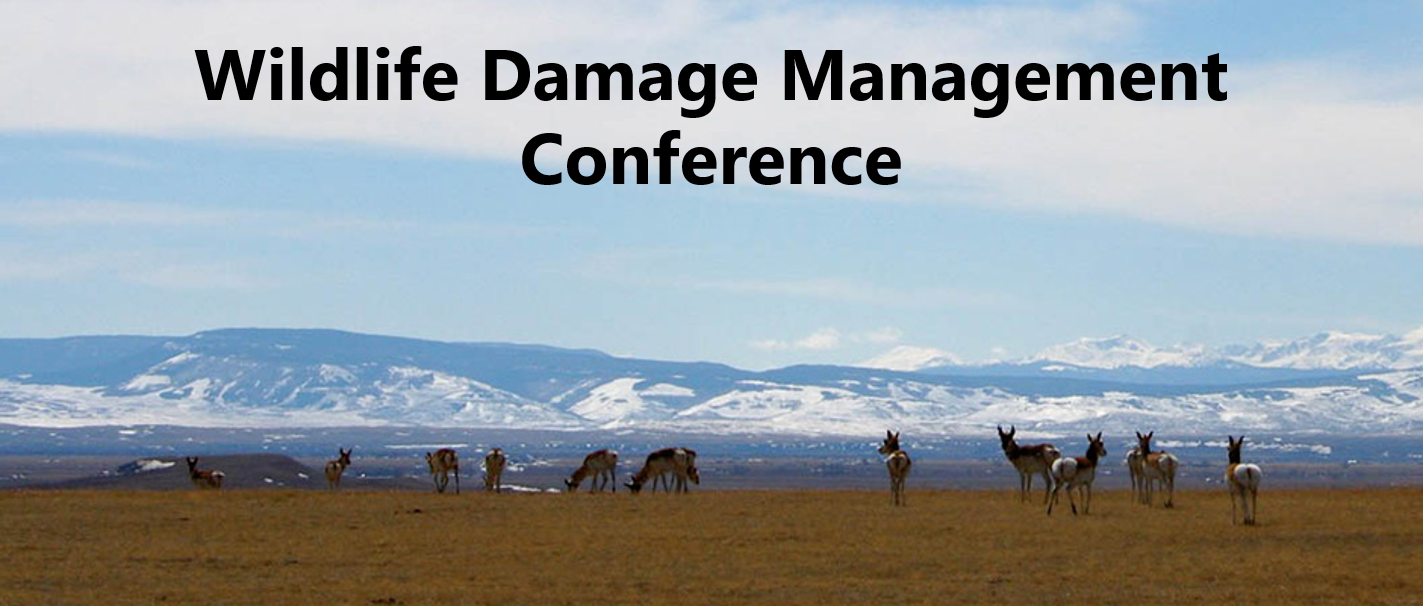Start Date
28-2-2017 10:00 AM
Description
Human-wildlife conflicts typically involve fundamental processes associated with the feeding behavior and/or the spatial behavior of wildlife. Thus, most human-wildlife conflicts arise from wildlife consuming products and/or wildlife occupying places valued by humans. For mammals, taste is the most important sensory cue for selecting nutrients and avoiding toxins. Most birds use both flavor (i.e. taste, odor, texture) and visual cues for their food selection process. We previously learned that an ultraviolet visual cue can enhance the repellency of an anthraquinone-based repellent for blackbirds, starlings, Canada geese and wild turkeys. Although the ultraviolet cue is not itself aversive, novel repellent formulations including ultraviolet cues have provided repellent efficacy at reduced concentrations of the repellent active ingredient. Ultraviolet repellent formulations are currently being developed for the protection of ripening agricultural crops from bird depredation. With regard to spatial behavior, exteroceptive sensory cues (e.g. visual, auditory, tactile cues) are reliably used for patch selection. We suggest that sensory cues and their paired consequences can be exploited for the development and application of effective strategies for wildlife damage management.
Recommended Citation
Werner, Scott J.; Deliberto, Shelagh T.; Mangan, Anna M.; and McLean, Hailey E., "Applications of Sensory Ecology for Wildlife Damage Management" (2017). Wildlife Damage Management Conference. 5.
https://digitalcommons.usu.edu/wdmconference/2017/session5/5
Applications of Sensory Ecology for Wildlife Damage Management
Human-wildlife conflicts typically involve fundamental processes associated with the feeding behavior and/or the spatial behavior of wildlife. Thus, most human-wildlife conflicts arise from wildlife consuming products and/or wildlife occupying places valued by humans. For mammals, taste is the most important sensory cue for selecting nutrients and avoiding toxins. Most birds use both flavor (i.e. taste, odor, texture) and visual cues for their food selection process. We previously learned that an ultraviolet visual cue can enhance the repellency of an anthraquinone-based repellent for blackbirds, starlings, Canada geese and wild turkeys. Although the ultraviolet cue is not itself aversive, novel repellent formulations including ultraviolet cues have provided repellent efficacy at reduced concentrations of the repellent active ingredient. Ultraviolet repellent formulations are currently being developed for the protection of ripening agricultural crops from bird depredation. With regard to spatial behavior, exteroceptive sensory cues (e.g. visual, auditory, tactile cues) are reliably used for patch selection. We suggest that sensory cues and their paired consequences can be exploited for the development and application of effective strategies for wildlife damage management.


